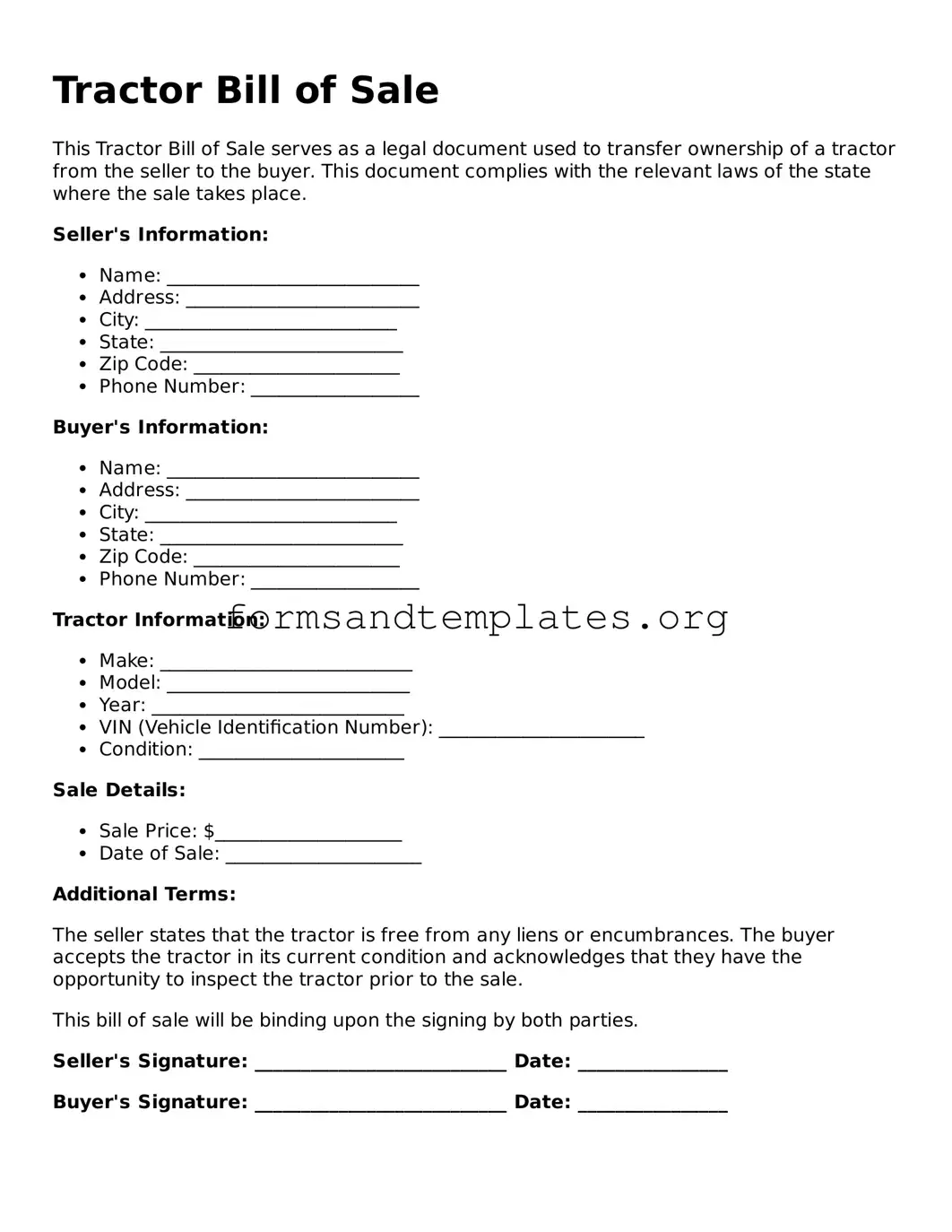Tractor Bill of Sale
This Tractor Bill of Sale serves as a legal document used to transfer ownership of a tractor from the seller to the buyer. This document complies with the relevant laws of the state where the sale takes place.
Seller's Information:
- Name: ___________________________
- Address: _________________________
- City: ___________________________
- State: __________________________
- Zip Code: ______________________
- Phone Number: __________________
Buyer's Information:
- Name: ___________________________
- Address: _________________________
- City: ___________________________
- State: __________________________
- Zip Code: ______________________
- Phone Number: __________________
Tractor Information:
- Make: ___________________________
- Model: __________________________
- Year: ___________________________
- VIN (Vehicle Identification Number): ______________________
- Condition: ______________________
Sale Details:
- Sale Price: $____________________
- Date of Sale: _____________________
Additional Terms:
The seller states that the tractor is free from any liens or encumbrances. The buyer accepts the tractor in its current condition and acknowledges that they have the opportunity to inspect the tractor prior to the sale.
This bill of sale will be binding upon the signing by both parties.
Seller's Signature: ___________________________ Date: ________________
Buyer's Signature: ___________________________ Date: ________________
